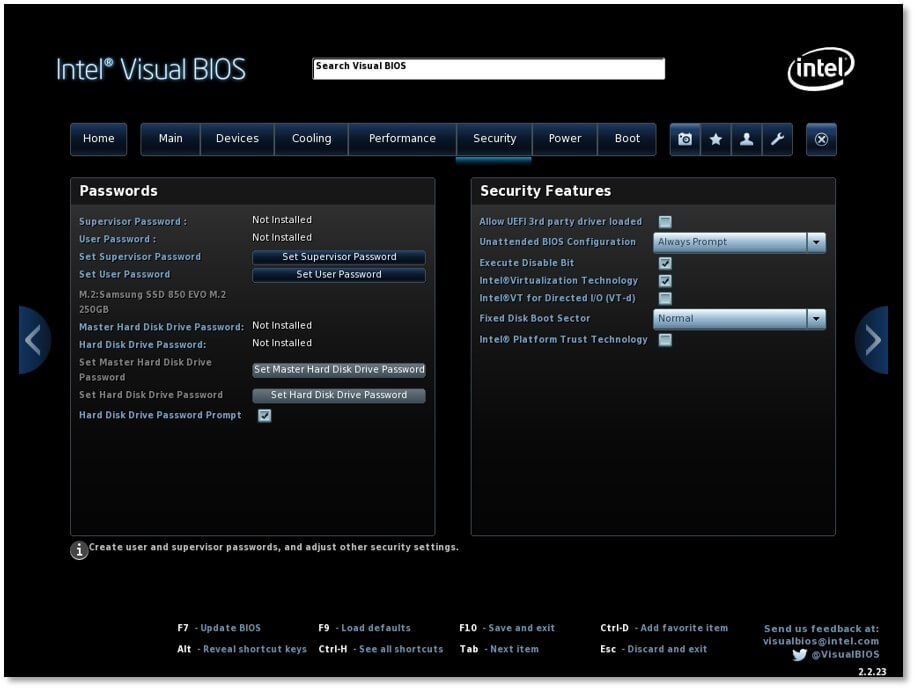

- #Clover efi bios legacyb uefi how to
- #Clover efi bios legacyb uefi install
- #Clover efi bios legacyb uefi download
- #Clover efi bios legacyb uefi windows
Next, type ‘sysdm.cpl’ inside the text box, then press Enter to open up the System Properties screen.
#Clover efi bios legacyb uefi windows
Press Windows key + R to open up a Run dialog box. Once the 3rd party suite is successfully installed, you will need to do some modifications from the System Information menus in order to ensure that the next operation will be succesfull. Launching Partition Master STEP 4: Disabling Automatically restart from Startup and Recovery Once this process is finished, click on Start Now to launch the application.
#Clover efi bios legacyb uefi install
Installing Partition MasterĪt the next screen, click the Install Free button and wait for the operation to complete.Īfter you do this, the installation utility will start by unpacking the installation files, then copy them over to your selected location.

It’s up to you if you want to install the 3rd party suite in a custom location or not. Inside the installation screen, follow the instructions to complete the installation. Admin rights are required to complete the installation.
#Clover efi bios legacyb uefi download
Once the download is complete, double-click on the installation executable and click Yes at the UAC (User Account Control) to grant admin privileges. Downloading the free version of partition master On the next page, click on the Download hyperlink to initiate the download of the installation executable. Once you get to the download page, click on Free Download, insert your email, and for the redirect to happen. The free version is more than enough, so there’s no need to go for a paid plan. Open up your default browser and visit the download page of the free version of EaseUS Partition Master PRO. STEP 3: Downloading & Installing Partition Master by EaseUs If it says GUID Partition Table (GPT), you are ready to go, so move up to Step 3 below. Accessing the Properties screen of your HDD / SSD partitionįrom the insides of your Properties screen, click on the Volumes tab and check the value associated with Partition Style. Once you’re inside the Disk Management screen, right-click on the partition that holds your OS installation and choose Properties from the newly appeared context menu. Next, type ‘diskmgmt.msc’ inside the text box and press Enter to open up the Disk Management utility. To verify your partition style, press Windows key + R to open up a Run dialog box. If it’s a different format, the instructions below will not work. Next, you need to ensure that the partition that is currently holding your Windows installation is formatted as GUID Table (GPT). If it says UEFI, the steps below will be applicable and you’ll be a able to use them to convert your default Boot Mode to Legacy. Once you’re inside the System Information menu, select System Summary from the column on the left, then move over to the right-hand side and check the BIOS Mode. Next, type ‘msinfo32’ inside the text box and hit Enter to open up the System information menu.

#Clover efi bios legacyb uefi how to
Note: The instructions below will show you how to change the UEFI BIOS to Legacy on a Windows 10 computer, but you can replicate these exact steps will older Windows iterations. We’ll start by making sure you meet the requirements, then proceed to use a 3rd party tool that will allow us to do this without losing any data. In the steps below, we are going to walk you through the whole process. The good news is, there is a way to change or covert a computer that has the UEFI bios mode by default to Legacy without losing data or having to uninstall the operating system. Converting UEFI to Legacy on Installed Windows (7, 8.1 & 10)

If you have been searching for a way to convert UEFI (Unified Extensible Firmware Interface) to Legacy BIOS (Basic Input / Output System) on an installed Windows system, you’ve come to the right place.


 0 kommentar(er)
0 kommentar(er)
